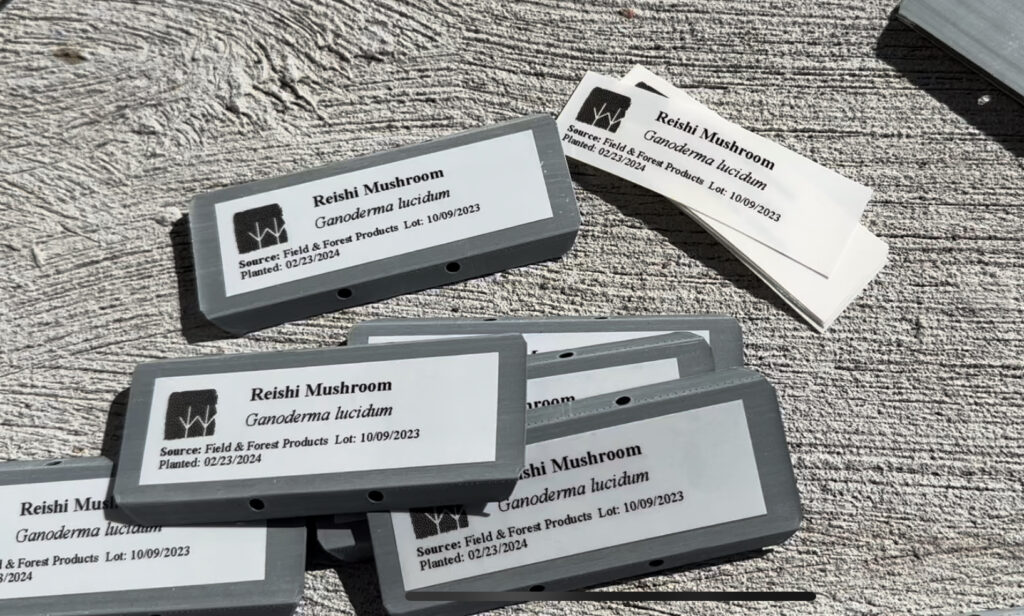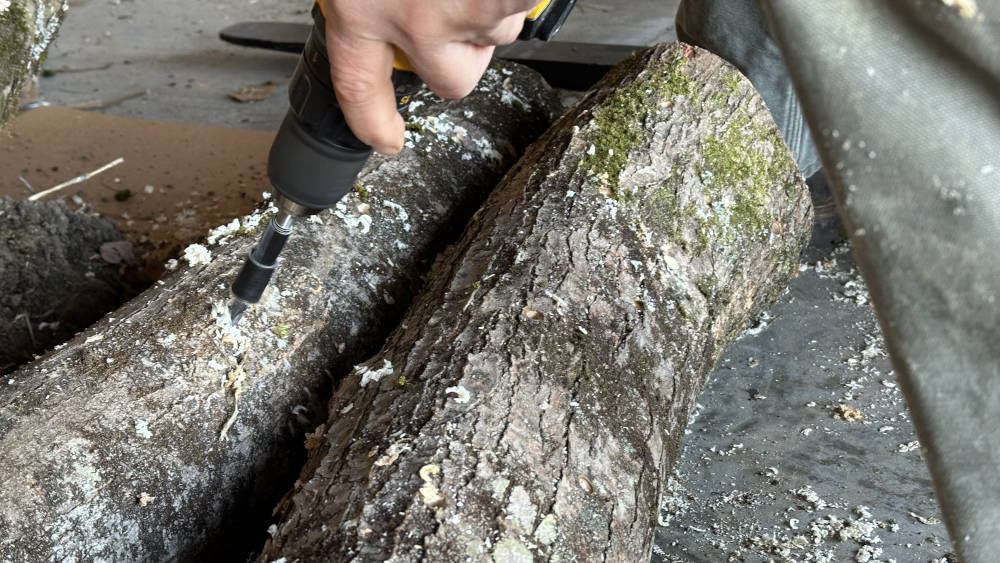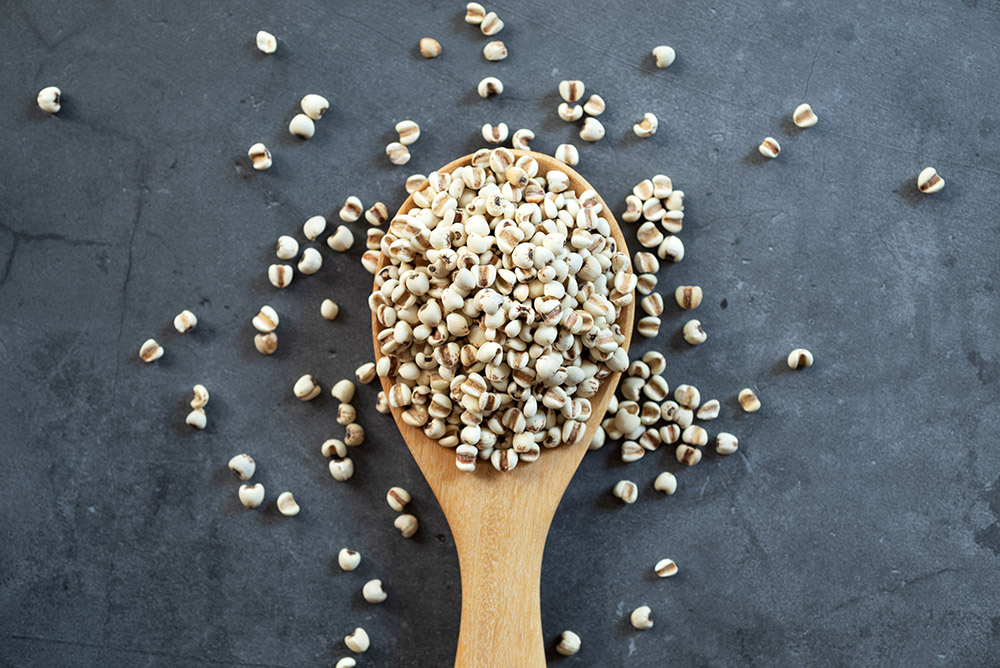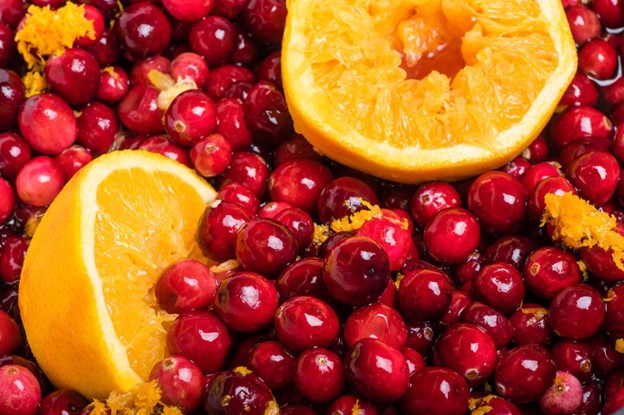Get Free Food by Growing Mushrooms on Logs

Many of you may have heard about growing mushrooms on logs. It is an accessible and rewarding form of mushroom cultivation that anyone with some logs and an appropriate location can do with minimal extra work. It mirrors the natural process by which many mushroom species grow in the wild. The journey begins with selecting the right type of wood, as different mushrooms have preferences that affect their growth and yield.
When Growing Mushrooms,
Tree Selection is Important
Hardwoods are generally preferred, with species like oak, beech, and maple being popular choices. The timing of cutting the logs is also crucial, ideally in late winter or early spring when the trees are dormant and moisture content is high. In our case, we have a good source of oak, maple, and poplar, so that is what we are using. I chose trees that were the right size and growing very close to other large trees, where they were not likely to get a good shot at the sun for a very long time, or trees that needed to be removed for other reasons, e.g., we are moving some poplars to open the forest up to give other hardwoods more sun to fill out and grow larger.

Growing Mushrooms – Shiitake
Favor oak, sugar maple, and American beech. These dense woods provide the necessary nutrients and structure for shiitake mushrooms to thrive. We are going our shiitake mushrooms on oak, some of which came from my parents’ home where a large oak tree blew down in a storm last month.
Growing Mushrooms – Oyster
Are less picky and grow well on poplar, willow, and cottonwood. Their fast colonization makes softer woods suitable for quicker harvests. We are using poplar for the oysters, we already have some growing naturally on the land and we have a lot of these trees, many are, unfortunately, already near the end of their life span and already are infected with other fungi (we can’t use those for growing oysters though).
Growing Mushrooms – Lion’s Mane
Prefer beech and maple. Their unique tooth-like structures develop well on these types of wood, given their nutritional profile and density. This is another species that grows natively here in our area. We have a fair bit of beech, but most of it is pretty small so we chose to grow this on maple.
Growing Mushrooms – Reishi
Known for their medicinal properties, reishi mushrooms do best on hardwoods like oak and maple, which support their slower growth cycle. We have related species of Ganoderma in our area, but this one is only cultivated here, we are going it on maple.
The Process for Growing Mushrooms
Inoculation Process: After I cut the trees down and cut them into ~4 foot sections, I used the tractor to bring them up to Tai Shan (泰山) (our shop building), where they’re being inoculated with mushroom spawn. This can be done using spawn plugs or sawdust spawn, we are using spawn plugs, which are wooden dowels that are already inoculated (we got ours from Field & Forest Products). Holes are drilled into the logs about every 6 inches down the length of the log and then, in an alternating pattern, about every 3 inches around the log. The holes are filled with spawn plug by pounding it in with a hammer, and then sealed with wax to protect against contamination and to retain moisture.

Curing and Fruiting: After inoculation, logs are stacked in a shaded, moist area to allow the mycelium to colonize the wood, a process that can take several months to a year depending on the species and environmental conditions. Proper moisture and temperature are key to successful colonization and fruiting. We are moving the logs into the forest, near the edge and relatively close to the house so we have easy access to them, which allows us to monitor them so that we see when they are starting to fruit.

Maintenance and Harvest: Logs need to be maintained at the right humidity level, sometimes requiring soaking in water to encourage fruiting. Once the logs start producing mushrooms, they can continue to do so for several years with minimal care. We will not likely soak our logs, which is done for “force” the fruiting process. This is a laborious process and not necessary.
Final Thoughts About Growing Mushrooms
Growing mushrooms on logs is a great way to produce food and medicine. It requires patience and care but offers rewarding results. Whether for culinary use, medicinal purposes, or simply as a hobby, mushroom log cultivation connects you with the cycle of life in nature, providing a deeper appreciation for the fungi kingdom.






Responses